Next: Impedance and Generalized Ohm's Up: Chapter 3: AC Circuit Previous: Sinusoidal Functions
In the following discussion about AC circuit analysis, all sinusoidal
variables (currents and voltages) are assumed to be of the same
frequency. In general, arithmetic operations of sinusoidal functions
are not convenient as they will involve using trigonometric identities.
For example, given two sinusoids of the same frequency 
 |
(16) |
 |
 |
 |
|
 |
 |
||
 |
 |
(17) |
 |
(18) |
 above can be written as the following in terms
of
above can be written as the following in terms
of  and
and  :
:
 |
(19) |
 and
and  we note that
we note that
 |
 |
(20) |
Alternatively, the addition of the two sinusoidal functions
above can also be carried out when they are treated as the
real (or imaginary) parts of rotating vectors in the complex
plane, and thereby more conveniently added in vector forms
in the complex plane:
 |
 |
 |
|
 |
 |
||
 |
![$\displaystyle Re[(A e^{j\phi}+B e^{j\psi})e^{j\omega t}]$](img63.svg) |
(21) |
 in three steps:
in three steps:
 and
and
 as two vectors (not rotating) in the complex
plane;
as two vectors (not rotating) in the complex
plane;
 (rotate again);
(rotate again);
Here the two complex exponentials




 into a
phasor
into a
phasor  (transformation from time domain to
frequency domain):
(transformation from time domain to
frequency domain):
 |
(22) |
 is the phasor representation of
is the phasor representation of
 , a vector in the complex plane.
, a vector in the complex plane.
 back into a sinusoidal time
function
back into a sinusoidal time
function  (transformation from frequency domain to time
domain):
(transformation from frequency domain to time
domain):
 |
(23) |
 , the phasor vector
, the phasor vector  starts to rotate in CCW direction, and its projection onto the
real axis is a real sinusoidal function.
starts to rotate in CCW direction, and its projection onto the
real axis is a real sinusoidal function.
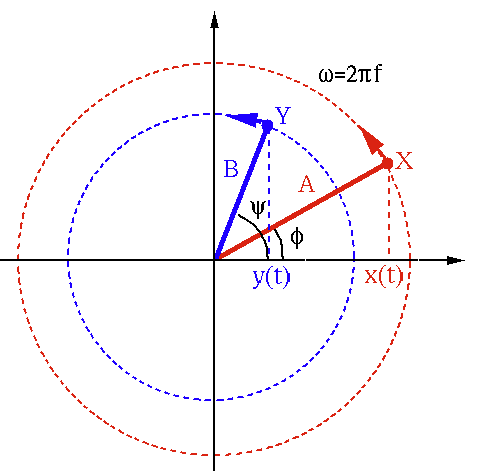
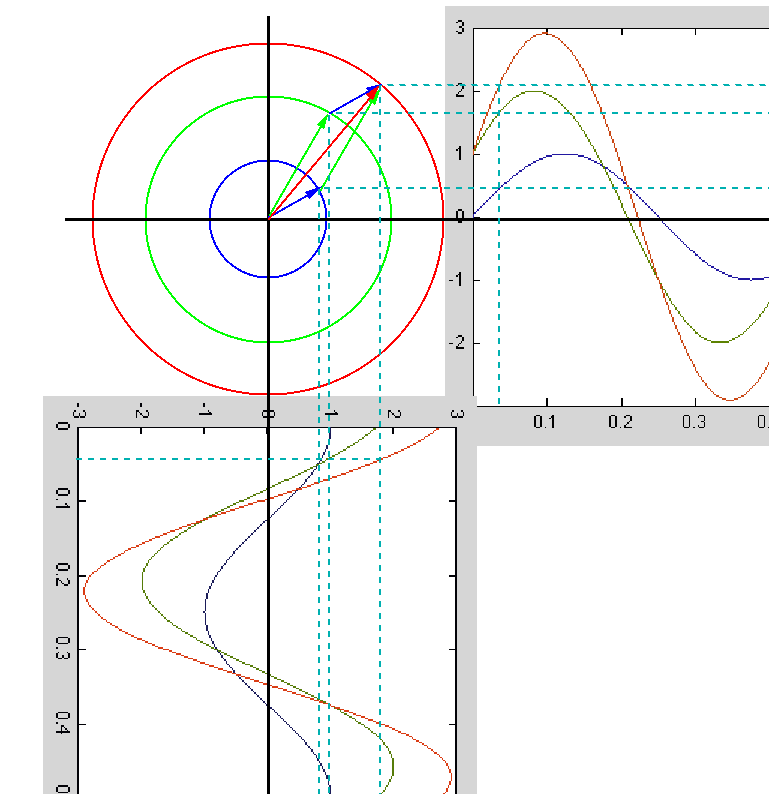
Specifically, the sum

![$\displaystyle \left\{ \begin{array}{l}
x(t)=A\cos(\omega t+\phi)=Re[A e^{j\phi}...
...psi)=Re[B e^{j\psi}e^{j\omega t}]
=Re[\dot{Y}e^{j\omega t}]
\end{array} \right.$](img76.svg) |
(24) |
 |
(25) |
 of the sum
of the sum
 as the vector sum of the two phasors (carry out operation in
frequency domain):
as the vector sum of the two phasors (carry out operation in
frequency domain):
 |
 |
 |
|
 |
 |
||
 |
 |
(26) |
 |
(27) |
 by multiplying its
phasor
by multiplying its
phasor  by
by
 and taking its real part
and taking its real part
 |
(28) |
(review of complex arithmetic)
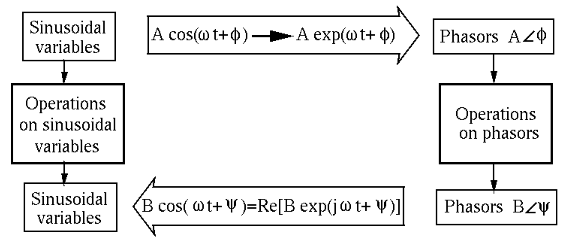
Example
Consider three sinusoidal voltage sources



 |
(29) |
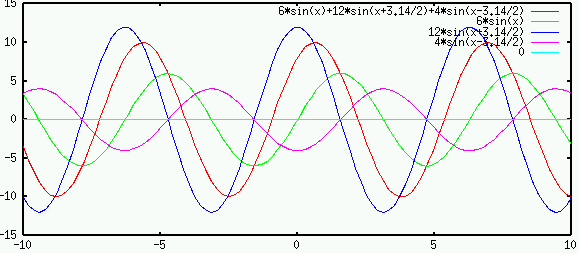
While the addition of these sinusoidal functions is not easy to carry out
(still remember all the trigonometric identities?), it is quite straight
forward to find the vector sum if the voltages are represented as phasors:
 |
 |
 |
|
 |
![$\displaystyle 6+j8=10 \angle \left[\tan^{-1}(8/6)\right]
=10\angle\; 53.1^\circ$](img91.svg) |
(30) |

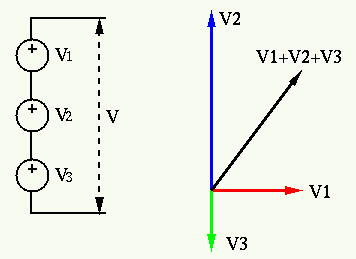
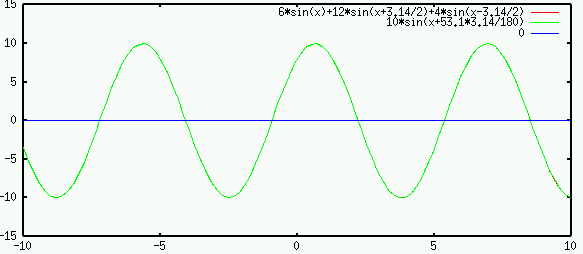
Phasor and the Fourier transform
A sinusoidal function

 |
 |
![$\displaystyle A\cos(\omega t+\phi)=Re[Ae^{j\phi}\;e^{j\omega t}]=Re[\dot{X} e^{j\omega t}]$](img94.svg) |
|
 |
 |
(31) |
 |
(32) |
 and the Fourier coefficients
and the Fourier coefficients  and
and  are essentially the same, in the sense that they are both
coefficients representing the amplitude and phase of the complex
exponential function
are essentially the same, in the sense that they are both
coefficients representing the amplitude and phase of the complex
exponential function
 .
.
In both cases the real time function can be obtained (inverse Fourier
transform) by either adding the two complex vectors


